- Home
- James A. Michener
The Source: A Novel Page 13
The Source: A Novel Read online
Page 13
He, the pronoun used to identify one man from among many—the singular human differentiated from all others, with a will of his own, a personal destiny and a unique personality—was a concept which must have come late in human development, and when Cullinane used it as he did, it raised various philosophical problems. Originally there had been men and women dwelling in a mass in caves, and of course there had been a distinction between male and female, but within those two categories there could not have been much individualization. A child was born and manifested no special characteristics. At fourteen or fifteen he was strong enough to muscle his way into full participation. At thirty he was an old man. And when his first tooth fell he could feel the claw of death at his throat, for the day could not be far off when he would no longer be able to fight for his food or rip it from the bone with his fangs. If he survived till forty he was a white-haired sage who existed only because some tender-hearted woman foraged his food for him. He lived and died within a blurred, undifferentiated destiny, and for nearly a million years in Israel his going was not even marked with a burial of any kind. The identification of he, the unique human being, probably resulted from an expanding social order in which categories became more clearly defined. A man began to perform a certain job or to live in a specified portion of the communal cave. He thus existed in relationship to known verities and in time began to partake of recognizable characteristics, even to develop them in order to fulfill the requirements of a burgeoning social order. As a result, he developed a personal space that moved with him and was his, a function that was his, and a manner of behavior that distinguished him. Most important of all, he painfully and with some terror, Cullinane supposed, began to develop, say, twenty thousand years ago, a way of thinking that was characteristically his, and in group meetings in the cave he began to defend the results of that thinking. There was an additional implication in the word he: it signified that the bearer of the pronoun existed in some kind of relationship to the forces of nature that surrounded him; he knew his place, as it were, and developed a strong sense of private property, and this discovery must have come very late indeed—within the last ten or twelve thousand years, Cullinane guessed—in what might be termed the age of speculation. Prior to that, men had known that an atmosphere of power existed around them, but they had also known that they were impotent to affect it. Man and storm coexisted in a kind of armed truce; with animals there was open warfare. So far as Cullinane knew, the dog on whom so much of man’s early pastoral life depended had been domesticated in other parts of the world as early as 12,000 B.C.E., but at Makor not until sometime around 7000 B.C.E., while the cow and the goat, which the dog was to tend and upon which civilization so strongly relied, were to come much later. It was doubtful, Cullinane thought, if man had appreciated his capacity to influence the future and his animals’ incapacity to do so until quite late. It was instructive and accurate to imagine earliest man as living for most of his first two million years within an insulation of stupidity, not fully differentiating himself from the physical world, the spiritual world, or the world of the other sentient animals. “So when I use the word he to specify one man living in one house by one well, I am speaking of an intellectual revolution so enormous in magnitude that I have not the words to describe it,” Cullinane wrote. He put his pen aside and mused: How I should like to see the eyes of that man who first brought wheat into cultivation. The first man to tame a wild dog. Or to arrange for the giving of his daughter in a formalized kind of marriage. Or to discover that in the high places a god was standing.
Wore, as Cullinane used the word, implied a whole scale of social judgments and was the end result of many moral decisions. Why did men decide to wear anything? How much of that decision sprang from cold or from a desire to inherit the power of animals by wearing their skins; how much from a need for sexual propriety, as suggested in Genesis? When some men began to wear something, what kind of pressure did they apply against others to make them do the same? At what point did women discover that they were more functional as women if they wore some ornament to differentiate themselves from men? This last was more significant than the layman would like to think, for beads had been found in Israel dating as far back as 40,000 B.C.E. and evidences of intentionally prepared perfume were common before the invention of writing. The businessman in Chicago who objects to his wife’s expenditures on jewelry should visit a prehistoric cave, he thought. There he’d find that his wife is in the grand tradition. A woman requires jewelry as a man requires food. Still, he thought, it was remarkable and a mystery not yet explained why contemporary men, who could watch the birds and animals and see that it was the male who was gaudy in decoration, had decided that among human beings this fundamental law should be reversed. He supposed that this could be one of the essential differences between man and animals: the former beautify their females. As to the components of utility, ritual and taboo that went into the formulation of a concept like wear, he preferred not to speculate. When enough sites had been excavated and enough research completed, some scholar would be able to specify how those concepts had developed; meanwhile he didn’t know, but almost every word symbolizing a value judgment had a unique history dating back some hundred thousand years before the age when man first learned to speak. To be specific, he still pondered what force had given the categorical imperative, “Wear clothes,” its social effectiveness. Vaguely he remembered that as an officer in the hottest and most humid parts of the Solomon Islands he had commented on the fact that all men and women had worn some kind of clothing, “and it certainly wasn’t because they needed to keep warm!”
Skins, the last word in the exacting sentence, pitched the reader into the imprecise origins of technology. At what age of man’s development did some technician discover that the skin of an animal could be scraped clean of fleshy particles, dried in the sun, rubbed with fat and the juice of oak galls, and crudely tanned into a pliable substance adaptable to the human form? Really, Cullinane reflected, so many problems are raised in that sentence that only a super-mechanic like Thomas Edison could find a place to begin. It probably took about fifty thousand years of step-by-step accumulation of experience until the complicated process was mastered. He repeated the phrase: fifty thousand years. It was an incomprehensible amount of time, ten times as long as man’s entire written history, and it was but a fragment of the total time that men had grappled with the problem skins. All Cullinane knew for sure was that sometime around 40,000 B.C.E. the men of the Mount Carmel caves had produced flint stones with serrated edges that could be used for scraping skins, so it was likely that they had at least begun the tanning process. But the word skins conjured up related technical problems that were even more fascinating. It’s probable, Cullinane reasoned, that our people at Makor in 9000 B.C.E. wore skins that fitted the body. Sewn together, if you like. Now where did they get the needles? The thread? And most important of all, the concept? It was the latter that was crucial, for once a group of people had the intelligence to say, “Let’s sew our skins,” ways would surely be found to do the sewing. But who had first proposed, “Let’s sew”? He guessed that it had been some woman watching a bird build its nest, sewing the strands of straw back and forth and tucking the ends in place with her sharp bill. Once this process was understood it was relatively simple—Say it took fifty thousand years, Cullinane mused—for the woman’s husband to cut a flint so that it could be used as an awl. Or some man had found a deer’s bone that could be sharpened, or a fragment of human shin that would serve nicely as a needle. In any case, over a period of time staggering to imagine, men had acquired their trial-and-error technology, and if today one could visualize the persistent will required to bring such a thing as a skin to the point of utility he would be made humble by the years, the toil of awkward fingers, the blockades of mind, and the yearning for accomplishment that underlay even the simplest process.
He wore skins. “What an infinity of comprehension is required,” Cullinane wrote in his rep
ort, “to appreciate this simple sentence in which I have compressed so much.” The first word implied a philosophical system, the second a social order, and the third an attitude toward technology; and he concluded that in each category his reader must grasp three fundamental developments. In philosophy: speech, the idea of self, the idea of god. In the social order: the domestication of grains and animals, group observance of accepted norms, the concept of a community. In technology: fire, flint tools, the principle of the fulcrum. He looked at his four pieces of flint, each a minute work of art, and wondered how a man’s hand, eleven thousand years ago, could have created these simple, lovely tools, and he found himself back where he had started: “How can I convey the thousands of centuries it took to bring man to the place where he could control flint so precisely?” And then the larger question: “How was he able to conceive of a sickle in the first place?”
• • •
When the young hunter retreated from the rock, the enraged girl followed him, still clubbing at him with her fists, and she would have used stones could she have got them, but in time her father and her brother managed to bring her under control. With anguish she broke away from them and ran to the fallen dog and threw herself on his bold, dead form, embracing the head that had sought her friendship. He was dead, this wonderful wild creature, and she sensed that she would never be able to find another like him. In later millennia at Makor other girls with her sensitivity would find other dogs willing to risk the tremendous step from forest to house, but she would not then be living. “Oh! Oh!” she sobbed, beating the rock with her fists, for she knew that something superior had been stolen from her.
The hunter was bewildered by the girl’s behavior. He was from the lands north of the well and loved to roam the deep wadis and the forested hills. As the accuracy of his spear had shown, he was a skilled hunter and at seventeen a rugged young man with visibly powerful legs for the chase. Ur, looking at him, was reminded of his own youth, and as the hunter stood at the edge of the rock, perplexed as to what he had done to arouse this grief, Ur said, “Stay with us for a while,” and the men left the rock where the girl lay burdened with sorrow.
Later the young hunter discovered that in killing the dog he had broken the point of his spear and he asked Ur if there were any sharpened flints that he might tie to the shaft. But Ur merely pointed toward his son, saying with some condescension, “He works the flint.” After the hunter had shown the boy what was required, the latter went to work on a nodule of flint which he had found imbedded in a white stone. There was nothing then in existence hard enough to cut flint, and most of the metals to be discovered later would not suffice; the artisan had to visualize the inner structure of the flint or he could accomplish nothing, so Ur’s son carefully chipped away the whitish outer coating of limestone until he could see the brown hidden core. He worked patiently on the fat end of the core, chipping it down until he had a level platform from which he could inspect the flint and decide how best to attack it. After some moments of study, during which he seemed to penetrate the secrets of the stone, he placed the small end of the core against a piece of wood, holding it with his left fingers so that he could feel the ridges and the lines of strain. He then took a pointed rock and held it exactly so against the platform, and with a smaller stone in his right hand delivered a slight tap, barely strong enough to kill a wasp. A large segment of the flint broke away exactly as he had intended, exposing a clear and shimmering face that narrowed to a point. Deftly he turned the core, tapped lightly again to strike off another face. For some time he continued this process, chipping away one fragment after another until at last he had a long, slender point powerful enough to penetrate any hide. The watching hunter was impressed, but then the boy did something not known in areas where the hunter came from. He laid the finished spearhead flat, and with a saw that he had made of flint he cut two deep notches in the flank, flint etching flint, and these would provide a means for securing the head to the shaft.
“He’s the best flint worker I’ve seen,” the hunter said admiringly.
“He’s not much of a hunter,” Ur replied.
“Could you make two or three more points?”
“In this wadi there isn’t much flint,” the boy explained.
“You need flint?” the hunter cried, and this was the beginning of the deep friendship that developed between Ur and the young stranger, for he told the family of a white cliff rising out of the Roaring Sea two days’ journey to the west where flints were so numerous that in a few hours a man could gather enough for a lifetime.
“Do you know how to get there?” Ur asked.
“Of course! I’m a hunter!” And he led Ur and his son through the dark glades to the west, and on the second day they came to the Roaring Sea, which the boy had not known before, and it glistened in the sun. The hunter took them to the white cliffs of which he had foretold, and there the boy found something he could scarcely believe: towering walls of chalk from which, at intervals laid down millions of years ago, layers of flint nodules protruded. With one hand Ur’s son could reach fifty, a hundred, a thousand perfect flint cores, waiting to be knocked loose from the easily broken chalk. The boy’s eyes gleamed, and he directed his father and the hunter as to what kind of flints he wanted: “The ones that are longer than they are wide through the middle.” And in a few hours the three men had all that they could carry.
They had come upon one of the surprises of nature, a bed of flint, whose nodules if properly worked could provide tools that would not be surpassed until other men along this great sea discovered copper-bronze. Ages upon ages ago, when the shores of this sea were being formed by the deposits of tiny animal skeletons that would later be transmuted into chalk, enormous colonies of alien sea animals congregated in special currents and died. Their bodies contained peculiar chemicals, and when billions of the little creatures deposited their corpses in one spot a kind of pocket was formed in the future chalk, so that later, when great pressures were applied from above, these dead bodies coagulated into knots which formed nodules of flint scattered through the more ordinary substance. Man had discovered the nodules, how long ago?—at least a million years, surely—and from them had fashioned the instruments whereby he lived, for flint could be worked into axes, arrowheads, spears, needles, saws or almost any tool that man could envisage; of equal importance, two pieces of flint when struck together produced fire. And now the son of Ur had unlimited quantities of this vital substance.
He made the hunter his extra spearheads, and for his sister he shaped three needles with which she consoled herself by sewing skins for the family; and one day Ur suggested to her, “You ought to sew a new skin for the hunter,” and somewhat against her will—for her lamentation for the dead dog had not ceased—she did so, and in time the hunter built a round house for her and she was pregnant with her first child; but the wild dog, that trusting beast who had sat with her on the rock, was never forgotten.
Ur’s son worked on his flints and one day asked the hunter, who was now his brother-in-law, to find him a curved bone of a certain dimension; and when this was provided, the boy went into seclusion for some time, after which he handed his mother an implement of new design. It was a sickle, a curved knife whose flints were wedged into the bone and tied with tiny thongs and secured with a substance made of resin from the cypress trees and honey. The beauty of this new device was that its curved tip sought out the stalks of wheat and brought them to the cutting edge, as if a man’s arm had been extended enormously. Entire families from the cave came to stand and watch enviously as the boy’s mother swung her arm in extensive circles, gathering the wheat to her and cutting it with an unbroken motion. It was miraculous.
Then came the great days at the well, the kind of days that men in all societies know occasionally, the few days that make the many years endurable. Ur’s wife and son worked the fields and found new ways to make the earth produce; the sun shone upon them approvingly and enough rain came, but no more. The other
s in the cave thought it significant that these two were growing enough grain to feed almost the entire cave, and husbands began to ask difficult questions of their wives: “Why can’t you do what his wife did?” Ur’s daughter cared for her first-born and wished that another bird would fall to her care, but none did; the lovely bee eaters flashed through the wadi and crested larks followed the reapers gathering grains. Sometimes a deer would dart across the fields beyond the rock and owls would call from the cypresses. How good the days were.
For Ur and his son-in-law these golden days were a continuous dream. Inspired by the young man, Ur returned to the hunt, setting forth each morning to probe the far ends of the wadi or the edges of the swamp. It was amusing to watch them go, the young man striding ahead with stocky Ur chugging along behind, pumping his bandy legs and calling instructions, trying to teach the hunter all the secrets of the land. Sometimes, when they got on to the track of a boar, the young man would leave Ur to mark the spot while he loped easily back to summon others from the cave, and often there would be a mass chase. But usually it was Ur and the young man going it alone in the companionship of the hunt that was so treasured by the old man.
At intervals Ur felt the intimations of death. Some of his teeth had broken off, and after running uphill for two or three hours he felt a shortness of breath. He sensed that he must be going, and although he felt a kind of animal fear of death, he found much joy in the fact that his son-in-law was such a stalwart hunter. The boy was swift and daring, as brave as Ur had hoped his own son would be. He could use a spear better than Ur himself, and when Ur had time to teach him the tricks of fighting close to the tusks of the wild boar he might possibly excel the old warrior. “He’s a great hunter,” Ur reported proudly as the men sat about the fire. “I think he’s better than my father was.” The young men of the cave nodded but the old ones said nothing, for they remembered Ur’s father.

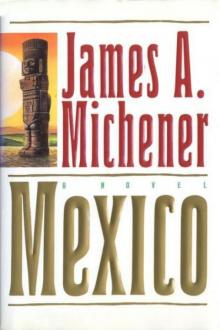 Mexico
Mexico The World Is My Home: A Memoir
The World Is My Home: A Memoir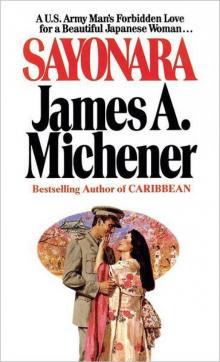 Sayonara
Sayonara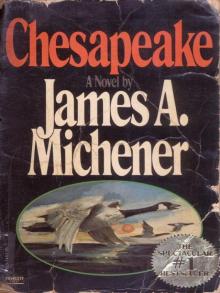 Chesapeake
Chesapeake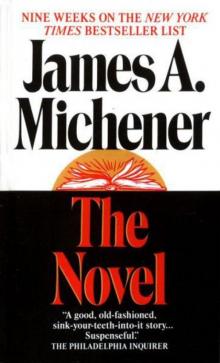 The Novel
The Novel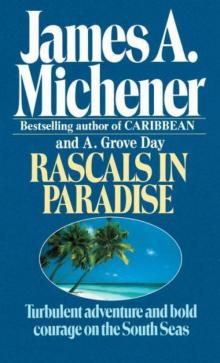 Rascals in Paradise
Rascals in Paradise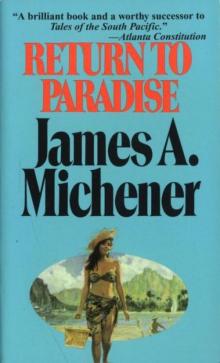 Return to Paradise
Return to Paradise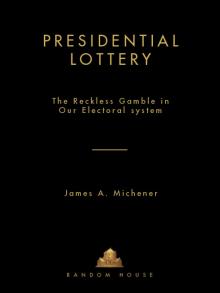 Presidential Lottery: The Reckless Gamble in Our Electoral System
Presidential Lottery: The Reckless Gamble in Our Electoral System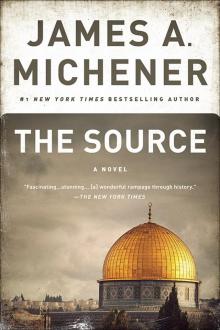 The Source
The Source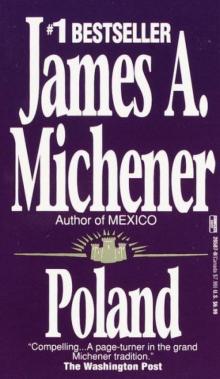 Poland
Poland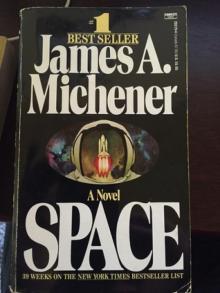 Space
Space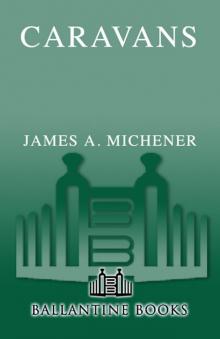 Caravans
Caravans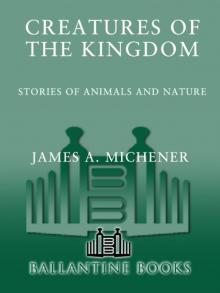 Creatures of the Kingdom: Stories of Animals and Nature
Creatures of the Kingdom: Stories of Animals and Nature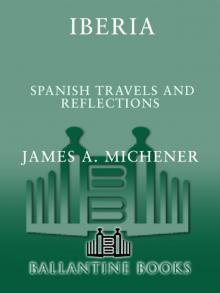 Iberia
Iberia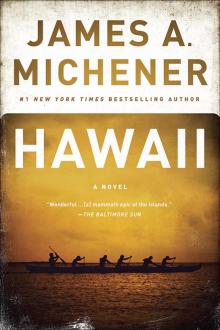 Hawaii
Hawaii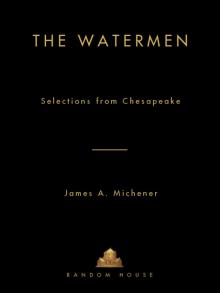 The Watermen: Selections From Chesapeake
The Watermen: Selections From Chesapeake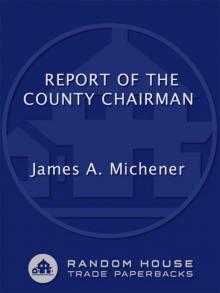 Report of the County Chairman
Report of the County Chairman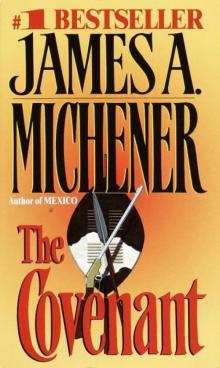 The Covenant
The Covenant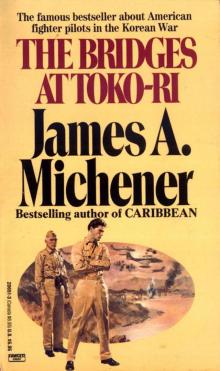 The Bridges at Toko-ri
The Bridges at Toko-ri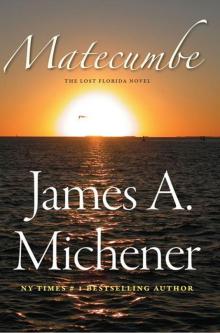 Matecumbe
Matecumbe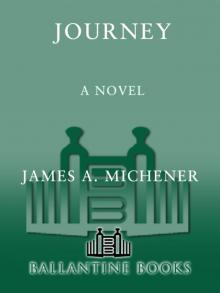 Journey: A Novel
Journey: A Novel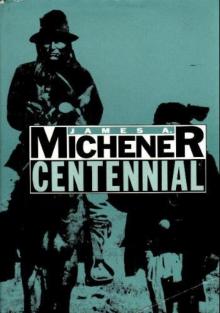 Centennial
Centennial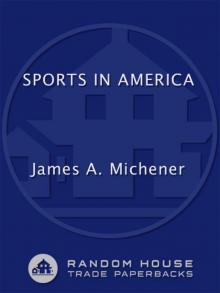 Sports in America
Sports in America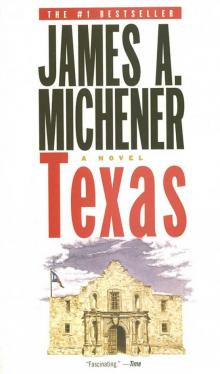 Texas
Texas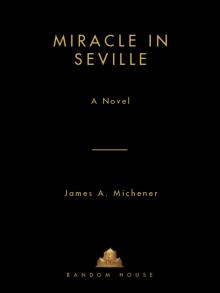 Miracle in Seville
Miracle in Seville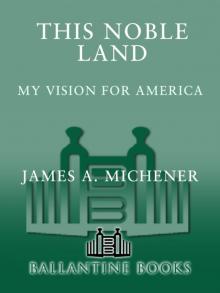 This Noble Land: My Vision for America
This Noble Land: My Vision for America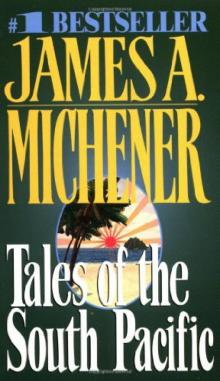 Tales of the South Pacific
Tales of the South Pacific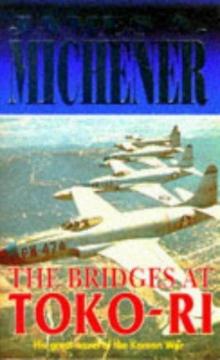 Bridges at Toko-Ri
Bridges at Toko-Ri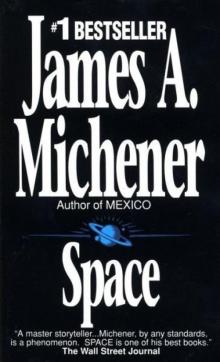 Space: A Novel
Space: A Novel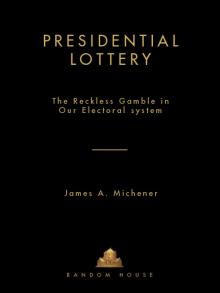 Presidential Lottery
Presidential Lottery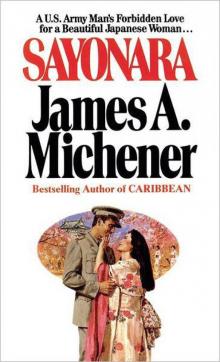 Sayonara: A Novel
Sayonara: A Novel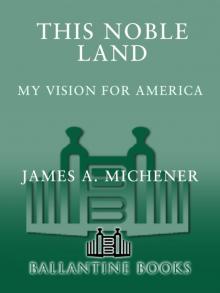 This Noble Land
This Noble Land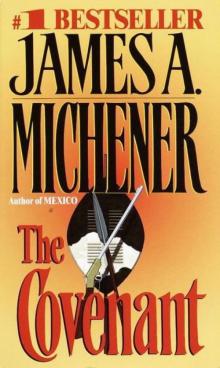 The Covenant: A Novel
The Covenant: A Novel Miracle in Seville: A Novel
Miracle in Seville: A Novel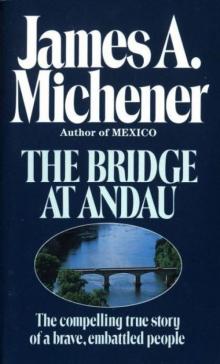 The Bridge at Andau
The Bridge at Andau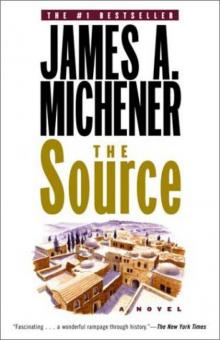 Source
Source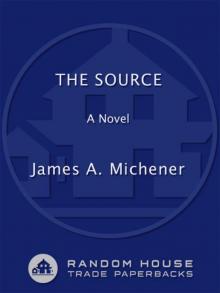 The Source: A Novel
The Source: A Novel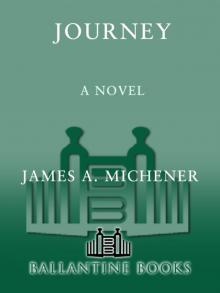 Journey
Journey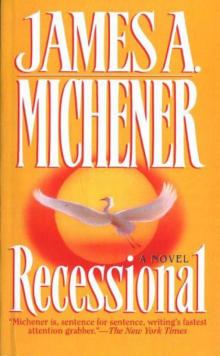 Recessional: A Novel
Recessional: A Novel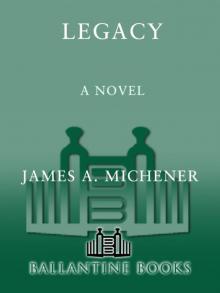 Legacy: A Novel
Legacy: A Novel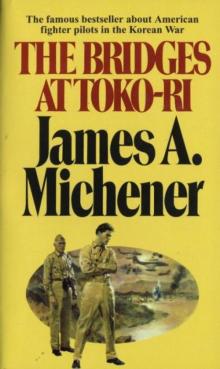 The Bridges at Toko-Ri: A Novel
The Bridges at Toko-Ri: A Novel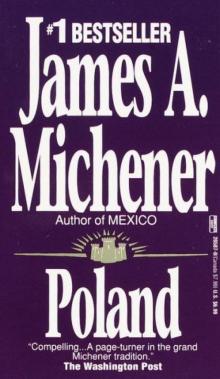 Poland: A Novel
Poland: A Novel